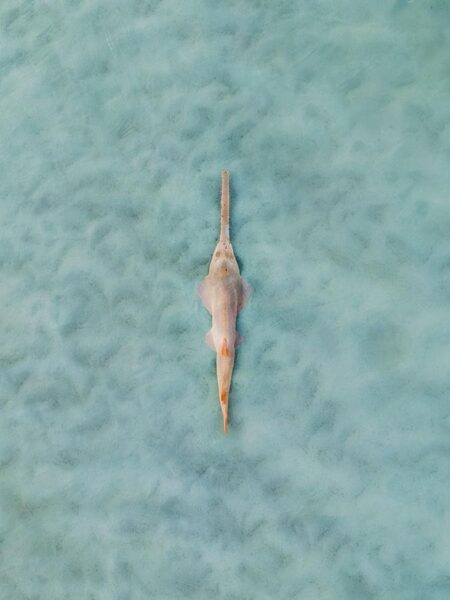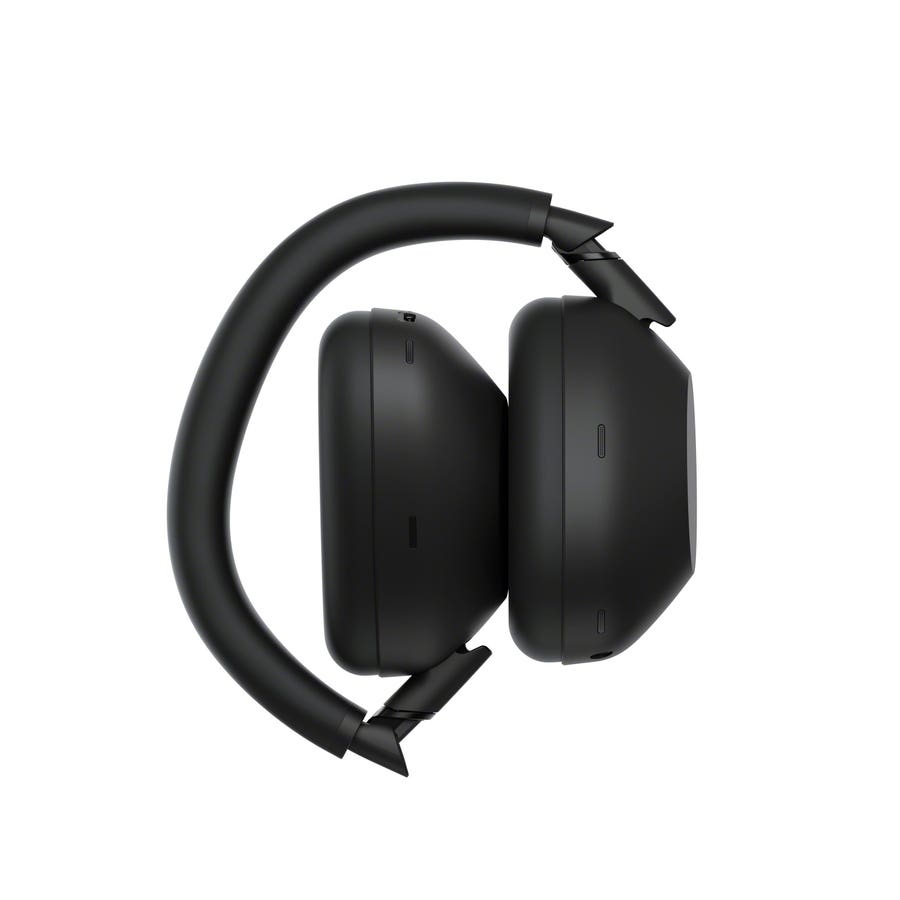Sawfish — with their long, toothed snouts that resemble saw blades — are being caught as bycatch in Australia’s largest tropical prawn fishery.
getty
In the warm, shallow azure waters off northern Australia, some of the ocean’s most extraordinary predators face an unexpected threat: prawn trawl nets. Sea snakes are highly adapted to life in the water, and most are venomous but pose little threat to humans if left undisturbed. They play a key role in marine ecosystems as predators of fish and eels, helping maintain balance in coral reef and estuarine habitats. In the NPF, sea snakes are encountered frequently in trawl operations, and their dense populations make them a significant component of bycatch. Similarly, sawfish are highly vulnerable to human activities. With their distinctive rostrum is lined with sharp “teeth” (they’re actually modified scales), which they use to slash through schools of small fish, sawfish are effective hunters in shallow coastal and estuarine waters. Yet, despite their predatory abilities, their rostrums easily become entangled in fishing nets, and their slow reproductive rates and late maturity make population recovery difficult. Northern Australia remains one of the few places where four species of sawfish still persist, making conservation here critical. For decades, fishery managers, scientists, and operators have sought solutions that allow prawn fishing to continue while minimizing harm to these vulnerable species.
The Northern Prawn Fishery, or NPF, has been a leader in this effort. As Australia’s first tropical prawn fishery to gain MSC certification, it operates under a collaborative framework that brings together fishers, government managers, and researchers. This cooperation has been essential in addressing bycatch issues, particularly for sawfish, which are among the most endangered marine animals in the world. To better understand interactions with sawfish and sea snakes, the NPF Industry compiled a database covering industry logbook data from 2010 to 2022. The NPF Sawfish, Sea Snake and Fishing Gear database integrates information on net types, Bycatch Reduction Devices (BRDs), and Turtle Excluder Device (TED) orientations. The goal was to identify patterns in bycatch and assess whether certain gear could reduce interactions without compromising prawn catches. One area of focus for the research team? TED flaps! Traditionally outfitted with black mesh, these flaps have been modified in recent years with grey Magna mesh (a sturdier material), as early anecdotal reports from skippers suggested this change might reduce sawfish entanglements. To evaluate these claims, the introduction of grey mesh was tracked in the database and compared against vessels using black mesh, taking into account variations in fishing zones, vessel size, and seasonal patterns.
Sawfish are rare incidental catches, and many fishing days yield zero interactions. This creates statistical challenges since detecting genuine changes in interaction rates requires large volumes of data and careful modeling to account for regional and seasonal differences. To address this, CSIRO scientists conducted a Generalised Linear Mixed Model analysis, where they examined factors such as year, season, fishing zone, TED mesh material, and vessel, using the best-fitting model to identify significant patterns. From 2019 to 2021, vessels using grey mesh TED flaps had a higher probability of interacting with sawfish on any given fishing day, roughly 37 percent more than vessels using black mesh (however, conditional on encountering at least one sawfish, the number caught was similar across mesh types). By 2022, the difference between grey and black mesh had nearly disappeared as grey TED flaps became widely adopted across the fleet.
Big shrimps (also known as “prawn”) in a fishing net. The Northern Prawn Fishery targets prawns in northern Australian waters, often referred to as Australia’s last ‘wild frontier.’
getty
Interpreting these findings is complicated by the fact that the period of grey mesh adoption coincided with an industry education program aimed at improving the accuracy of reporting endangered species. It remains unclear whether the apparent increase in interactions reflects real differences in catchability or simply more diligent reporting.
The implications of this research extend beyond the NPF, with lessons learned from gear modifications, bycatch monitoring, and fleet collaboration providing a valuable model for other tropical prawn fisheries in Australia and internationally to follow (or get inspiration from). The findings are also not limited to sawfish; the project also examined sea snake interactions, particularly following the fleet-wide adoption of Tom’s Fisheye BRDs in 2020, as early evidence suggested these devices significantly reduced sea snake bycatch. By collating and analyzing data from 2015 to 2022, researchers were able to quantify reductions and compare the NPF’s experience with other prawn fisheries. Understanding these trends is essential for guiding management decisions and ensuring compliance with environmental requirements under the EPBC Act.
The ultimate goal is a fishery that is both productive and sustainable, where the risk to endangered species is minimized. Not just here in Australia, but worldwide.
The NPF’s experience shows that progress is possible when fishers, managers, and scientists work together toward shared goals. Small design changes, rigorous monitoring, and continuous collaboration can have a meaningful impact on endangered species, but it’s crucial to remember that there are no simple solutions, and every decision must be guided by evidence. The NPF stands as an example of how sustainable fishing can coexist with conservation, but it also serves as a reminder of the ongoing threats faced by some of the ocean’s most vulnerable creatures.









